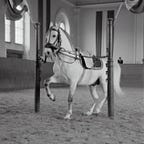Western riding
Western riding is described as a type of equestrian riding which originated from the early ranching and welfare communities which were brought to America by the Spanish conquistadors, and the two before gear and riding style that evolved to match the more physically demanding outdoor needs of their westward cowboy. The main part of Western riding, according to some experts, is using a large “rope whip”, or rather, two of these whips, one for the front and one for the rear. The objective of these was to offer the rider with a simpler and faster way to go across irregular and wild terrain. Horseback riding in the old days was a much harder procedure, requiring considerably more physical strength and ability than it has now.
This required a gigantic infrastructure to support not just the huge numbers of cattle, but also the gigantic amounts of hay which they needed to keep them healthy and effective. Much of the infrastructure was designed by local Native Americans, whose longstanding connection with nature and the animals they raised (in actuality, many tribes depended upon their vast herds for their food and shelter) became integral to both the well-being of their cattle and the stability of the whole farming economy. And so it came about that a lot of the design and structure of the crucial part of Americana was in keeping with the requirements and functions of the Indians, who used the natural landscape of the West as a way to protect their people, their families, their possessions, and their whole lifestyle.
The most frequently recognized style of riding on horses, known as Western riding, emerged as a means to entertain the troops during the Mexican-American War. In actuality, this style of riding became so popular that it had been declared a kind of war game in some states.
Western riding could be best described as a type of dressage, or, more correctly, as a collection of exercises designed to test the skills and response times of the rider and horse. The horse is taught to follow and proceed with the motions of his master, and the rider is trained to respond quickly to stop the horse from being hurt. There are lots of unique versions of Western riding, and it’s very likely you will encounter one that suits your interests and style. Some, known as trail riding, are designed to check the skills of horseback riders, though other styles involve considerably more rigorous and difficult maneuvers.
When you think about the physical demands that Western riding places on horses, you will often agree it is no easy task. An English saddle, which resembles the contemporary Western saddle, would not permit a horse adequate support, and would most likely cause injury. This saddle was devised for the purpose of working with a mare to pull a cart throughout the nation and fields. She had been trained to pull with no difficulty and with ease, and was therefore a superb test to determine how well her skills were developed. The Western riding saddle was developed to permit the rider to have a fantastic balance, and to offer protection to the horse’s back.
Each requires a certain amount of skill and training to master. Courses of this type are usually designed by professional riders and frequently include jumps, obstacles, bridges and other obstacles that examine the horse and rider to their fullest physical abilities. A gorgeous part of Western riding is its ability to integrate the equestrian discipline to a fun and challenging activity, allowing individuals of all ages and abilities to participate.
